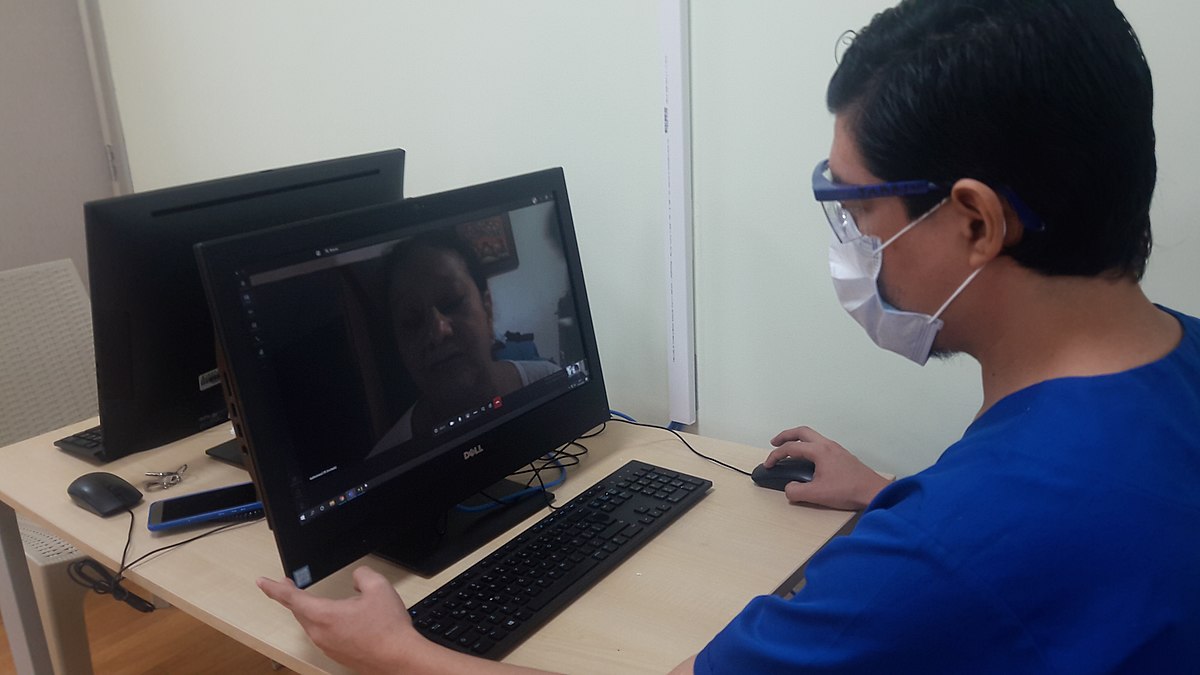
- Details
- By Chuck Hoskin Jr
Guest Opinion. One of my most urgent priorities as Chief of the Cherokee Nation has been combatting the opioid epidemic. The opioid industry flooded Cherokee communities with these dangerous drugs. Overdose deaths more than doubled among Cherokee citizens between 2003 and 2014, and the fallout strained many of our tribal services, including clinics and emergency rooms, law enforcement and child welfare.
In 2017, we were the first tribe in the nation to file a lawsuit against the opioid industry, and our $100 million settlement from that lawsuit is now being invested in addiction care. The goal for these funds is to make treatment easily accessible, without judgment or unnecessary barriers, for every Cherokee who needs it.
That’s why I was disturbed to see a new proposed federal regulation that would increase barriers for some of our most vulnerable patients. The proposal by the Drug Enforcement Administration would prevent telemedicine doctors from prescribing controlled substances such as buprenorphine, a lifesaving medication for those struggling with opioid addiction. Without an in-person appointment, the proposed rule limits prescriptions of buprenorphine to a single 30-day supply. This change poses a severe risk to our citizens, especially those living in rural areas with limited access to transportation and resources.
Telemedicine, the practice of connecting patients and medical professionals via phone and video calls, has been essential for reaching patients. New flexibilities for telemedicine were allowed during the COVID-19 public health emergency. However, with the emergency declaration expiring, some regulators are now attempting to make telemedicine more restrictive and less convenient.
This makes little sense. Over the past few years, telemedicine has proven to be an extremely valuable and successful way to provide care, especially for behavioral health issues like addiction. It reduces waiting times for an appointment and increases flexibility for patients and providers alike.

For example, many of our patients newly in recovery have recently found employment. Telemedicine appointments, which can be as short as 15 to 20 minutes, allow them to continue working and receive essential treatment during their breaks. Without this option, patients may be forced to take hours off work, jeopardizing their recovery journey.
Quick and easy access to a buprenorphine prescription is especially important in the early days of recovery. Buprenorphine can ease opioid withdrawal symptoms while blocking the ability for other opioids to cause an effect. But if a patient’s buprenorphine access is disrupted, they face a very high risk of falling back into addiction with far more dangerous substances.
The DEA's intention to catch over-prescribers by requiring an in-person appointment is misguided, as there is no evidence that a single in-person visit would reduce any misuse of buprenorphine. Unscrupulous over-prescribers will continue to find ways to exploit the system. Meanwhile, this additional hurdle inconveniences everyone.
Access to telemedicine is a lifeline for many Cherokees, and we must protect it to keep up the fight against the opioid crisis. Cherokee Nation is among thousands of voices across health care and addiction recovery communities who are speaking out against this proposed rule. You can join us by writing to your members of Congress and President Biden.
Chuck Hoskin, Jr. is the principal chief of the Cherokee Nation.
More Stories Like This
Governor Stitt, it’s raining. Save SNAP.Remembering My Grandma During Native American Heritage Month
HHS Secretary Kennedy to Indian Country: Even During a Shutdown, Your Health Care is My Priority
Finding the Good News: MacKenzie Scott’s Quiet Commitment Amidst the Noise
Martial Law in an American City —1929
Help us tell the stories that could save Native languages and food traditions
At a critical moment for Indian Country, Native News Online is embarking on our most ambitious reporting project yet: "Cultivating Culture," a three-year investigation into two forces shaping Native community survival—food sovereignty and language revitalization.
The devastating impact of COVID-19 accelerated the loss of Native elders and with them, irreplaceable cultural knowledge. Yet across tribal communities, innovative leaders are fighting back, reclaiming traditional food systems and breathing new life into Native languages. These aren't just cultural preservation efforts—they're powerful pathways to community health, healing, and resilience.
Our dedicated reporting team will spend three years documenting these stories through on-the-ground reporting in 18 tribal communities, producing over 200 in-depth stories, 18 podcast episodes, and multimedia content that amplifies Indigenous voices. We'll show policymakers, funders, and allies how cultural restoration directly impacts physical and mental wellness while celebrating successful models of sovereignty and self-determination.
This isn't corporate media parachuting into Indian Country for a quick story. This is sustained, relationship-based journalism by Native reporters who understand these communities. It's "Warrior Journalism"—fearless reporting that serves the 5.5 million readers who depend on us for news that mainstream media often ignores.
We need your help right now. While we've secured partial funding, we're still $450,000 short of our three-year budget. Our immediate goal is $25,000 this month to keep this critical work moving forward—funding reporter salaries, travel to remote communities, photography, and the deep reporting these stories deserve.
Every dollar directly supports Indigenous journalists telling Indigenous stories. Whether it's $5 or $50, your contribution ensures these vital narratives of resilience, innovation, and hope don't disappear into silence.
 The stakes couldn't be higher. Native languages are being lost at an alarming rate. Food insecurity plagues many tribal communities. But solutions are emerging, and these stories need to be told.
The stakes couldn't be higher. Native languages are being lost at an alarming rate. Food insecurity plagues many tribal communities. But solutions are emerging, and these stories need to be told.
Support independent Native journalism. Fund the stories that matter.
Levi Rickert (Potawatomi), Editor & Publisher
